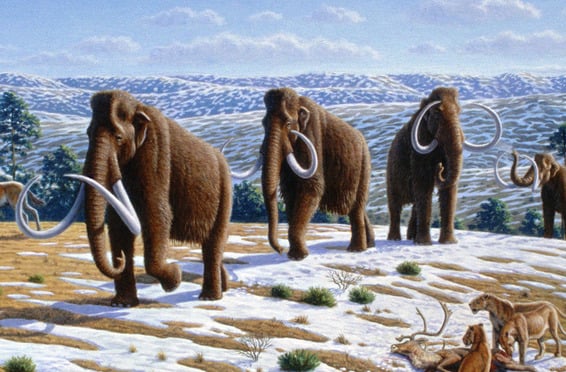Search
De-extinction?
-
 July 3, 2025There is a biotech company working on “de-extinction.” They plan to bring back animals that have gone extinct, and among the animals on the list are the woolly mammoth, the dodo, and the Tasmanian tiger. The project sounds interesting and exciting, and I think it would be hard to resist an opportunity to see one of these extinct animals. Although these projects do not directly affect human life, some concerns, including ethical considerations, might affect us and have bioethical implications.
July 3, 2025There is a biotech company working on “de-extinction.” They plan to bring back animals that have gone extinct, and among the animals on the list are the woolly mammoth, the dodo, and the Tasmanian tiger. The project sounds interesting and exciting, and I think it would be hard to resist an opportunity to see one of these extinct animals. Although these projects do not directly affect human life, some concerns, including ethical considerations, might affect us and have bioethical implications.
The plan to bring back certain extinct animals relies on the use of their DNA. Mammoths, dodos, and Tasmanian tigers have all gone extinct recently enough for their DNA to still be available. For the purposes of this essay, I will focus on the woolly mammoth as an example.
The scientists plan to collect woolly mammoth DNA and splice the mammoth's genes into Asian elephants (the closest living relative of the woolly mammoth). The hope is to produce Asian elephant embryos with woolly mammoth characteristics, including the ability to survive in the cold climates where mammoths lived.
The technology is fascinating, and there’s no denying the interest a revived mammoth would generate. It’s also worth noting that most of the animals set for de-extinction are unlikely to cause the kind of damage and loss of life that the dinosaurs in “Jurassic Park” caused. Even so, I believe there are reasons for concern. Fr. Richard LibbyFirst and most obviously, we do not know how we will coexist with animals that have been extinct for hundreds or even thousands of years. Perhaps there won't be any problems, but we can't know that. It would be terrible if any problems arose at the cost of a human life.Second, these animals became extinct for a reason; if this project is to succeed, we would need to be sure that the reasons for extinction would not become factors again.
Fr. Richard LibbyFirst and most obviously, we do not know how we will coexist with animals that have been extinct for hundreds or even thousands of years. Perhaps there won't be any problems, but we can't know that. It would be terrible if any problems arose at the cost of a human life.Second, these animals became extinct for a reason; if this project is to succeed, we would need to be sure that the reasons for extinction would not become factors again.
The dodo, for example, lived only on the island of Mauritius (in the Indian Ocean). The Dutch acquired Mauritius in 1598 and discovered the unusual birds. While the Dutch settlers hunted dodos and transported them abroad as curiosities, the real threat to the dodos came from other animals that the Dutch introduced to the island. The last reported sighting of a dodo was in 1688. Given the sad history of the dodo, it would be necessary to provide the dodo with a proper habitat and to avoid subjecting it to the same fate.
Third, we should accept that the animals will not be what they are advertised to be. Since each extinct animal will have its genes spliced with those of its closest living relative, the resultant animal will be a hybrid. We would have Asian elephants with mammoth characteristics, Nicobar pigeons with dodo characteristics, etc.
Fourth, these animals would be manufactured rather than being created by God. God would be left out of the picture. This would not have the same moral weight as similarly creating new human life, but nevertheless, the Book of Genesis is clear that God created the animals, too.
The final and most significant concern is the technology used in this process. The question arises: what would prevent the technology from being employed similarly to human lives? Such an experiment would raise serious concerns because the dignity of human life and the means of its transmission would not be upheld or respected. The final concern would be a bioethical problem that would trouble the Catholic conscience.
Scientists working on de-extinction believe that reviving extinct animals would benefit the environment and contribute to a healthier ecosystem. This may be true, as far as it goes, but it will take millions of dollars and several years before even the first sign of success might be seen. The money could be better spent on ecological initiatives that would be more feasible and produce more immediate results, including efforts to protect animals that are now endangered.
The idea of reviving species such as the woolly mammoth and the dodo from extinction sparks the imagination. It possesses the elements of a science fiction thriller, even though the attempt is being made. It might be best if this project remains in the realm of science fiction.
